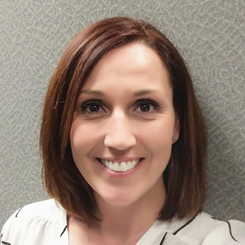Homeowners Insurance
Plugging The Leaks
Non-weather-related water damage is the second-leading cause of homeowners claims. New tech tools are helping to drive down those losses.
- Lori Chordas
- December 2018
-





Key Points
- A Bursting Problem: Non-weather-related water damage is one of the most common and costliest causes of home damage in the United States.
- Underwater: Insurers pay out billions of dollars annually on those losses.
- Looking Ahead: Smart home technology and IoT sensors are helping mitigate the problem and insurers are offering premium incentives to encourage homeowners to install those devices.
The hurricane season of 2018 brought another round of devastating weather-related property damage, following one of the worst years on record last year. Total insured losses from this year's events, including mammoth storms Florence and Michael, were expected to total an estimated $10 billion, according to industry reports.
But Mother Nature isn't the only one causing claims for the industry.
Culprits inside the home, including frozen pipe leaks and failures, faulty plumbing, sewer backups and broken appliance water lines, are also driving up property claims.
Non-weather-related water losses are one of the leading causes of homeowners claims, according to industry reports.
In an October earnings call to investors, Chubb North America Chairman and CEO Evan Greenberg reported a rise in non-weather-related water losses during this year's third quarter,
Aviva Canada is also seeing a spike in those losses. About 40% of the Canadian property/casualty insurer's homeowners claims stem from water damage, including non-weather-related events.
While claims are on the upswing, policyholders' awareness regarding these types of claims remains low.
That's because water loss doesn't garner the same attention as other damage-causing events, said Stephen Poux, global head of risk management services and loss prevention at AIG Private Client Group. The company, a division of AIG, insures high net worth individuals and families.
“Water isn't sexy. It doesn't kill people, and it doesn't make the evening news like wildfires and theft,” he said.
Yet, over the past two years more than half of U.S. homeowners have experienced a water leak claim that generated $5,000 or more in cleanup and repair costs, according to Chubb.
Aging infrastructure, urban sprawl, colder temperatures and extra bathrooms and second-floor laundry rooms in homes are causing the rise in water damage.

Stephen Poux
AIG Private Client Group
Water damage doesn’t garner the same attention as other damage-causing events. It “isn’t sexy. It doesn’t kill people, and it doesn’t make the evening news like wildfires and theft.
Turning to Technology
Unlike hurricanes and floods, water damage is often preventable.
Simple measures, such as inspecting hoses and faucets, installing emergency pressure-release valves, checking pipes and knowing the location of a home's main water shut-off valve, can stave off costly repairs.
Homeowners, however, are failing to take those necessary steps.
Less than half of homeowners say they periodically check appliance hoses or conduct water heater maintenance, and only 19% have installed a water shut-off device, according to Chubb's 2018 Homeowners' Water Risk Survey.
Insurers are hoping the use of artificial intelligence, predictive analytics and the internet of things will change that. Reports show smart home devices, Wi-Fi-connected water leak detectors and whole house shutoff systems can reduce non-weather-related water losses by up to 93%.
That's good news for insurers, who are paying billions of dollars annually for those claims.
Insurers are promoting the use of in-home, tech-enabled water detection tools by partnering with device manufacturers and incenting homeowners to install and use those devices.
Home telematics provider Roost is partnering with Erie Insurance, Mutual of Enumclaw Insurance and others to provide homeowners with a free Roost Smart Water Leak and Freeze Detector that uses a mobile app to alert homeowners about a burst pipe or water leak.
The detector, which can be placed in water-leak-prone areas such as sinks, toilets and hot water heaters, is designed to sense water leaks, humidity and freezing temperature situations.
The result of those efforts could save insurers and consumers up to $10 billion annually in water loss costs, said Roost CEO and co-founder Roel Peeters.
Chubb is also incenting the use of in-home water devices, such as Sentinel Hydrosolutions' Leak Defense System. Along with premium discounts ranging from 3% to 8%, Chubb's personal risk policyholders can receive discounts on water leak detection systems like Sentinel's that detect leaks and shut off the water supply to a home.
Devices like those are filling a need in the market.
“There's a fundamental shift occurring in property insurance,” Peeters said. “Traditionally property insurance has been an indemnification business where carriers write a check when all is lost, so to speak. But the advent of smart, connected devices allow insurers to now be in the protection and prevention business.”

Jennifer Naughton
Promoting Awareness
The promise of those devices, however, is being overshadowed by low take-up rates.
”We are finding that homeowners have not been very accepting of putting those systems and sensors in their homes,” said Bill Gatewood, corporate vice president and director, personal insurance at Burns &Wilcox, a wholesale insurance broker and underwriting manager.
The industry, he said, can play a role in educating homeowners. “The insurance industry doesn't always do the best job of creating awareness,” Gatewood said.
AIG Private Client Group is trying to build awareness of the issue.
The company offers loss prevention device coverage that pays policyholders for the installation of technology.
“If frozen pipes in, let's say, someone's second home cause a claim, then as part of the claims settlement process we'll reimburse them up to a certain limit to install technology that would have detected or taken action to shut off the water in the first place,” Poux said.
Homeowners who have suffered a water damage loss in the past are two to three times more likely to experience a future loss, AIG Private Client Group reports.
“So we understand the importance of addressing the issue and improving tools and expertise to get at the initial source of damage. It's also important for brokers to understand the role they play in advising clients and helping them navigate the claims and loss prevention process,” Poux said.
While home telematics and tech-enabled water detection tools are just starting to make their way into the industry, Jennifer Naughton, executive vice president and risk consulting officer at Chubb, is hopeful that they'll soon become the norm.
Today, more than 90% of Chubb homeowners have fire or smoke detection devices installed in their homes, yet only 1.5% have a water shut-off device.
“When those devices are used, it's also important to ensure that enough devices are in place. A 4,000-square foot home, for instance, should have at least 10 or more sensors to be adequately protected. Also, the installation of smart thermostats can be programmed to keep homes at a steady temperature year-round to avoid pipes from freezing,” Naughton said, adding Chubb recommends that the temperature should not be kept below 65 degrees.
The Cost Factor
Costs generated by water damage continue to rise.
Since 2015, non-weather-related water losses exceeding $500,000 have more than doubled, and those topping $1 million have tripled, according to industry reports.
The average cost of a home water damage claim today tops $6,700, according to reports.
The majority of those claims come from plumbing supply system failures, including frozen, leaking or burst pipes.
The average cost for those failures, after the deductible is met, is $5,092 per incident, according to the Insurance Institute for Business and Home Safety. Corroded, leaky or improperly installed pipe-related losses cost about $4,300 and water heater failures tally up more than $4,400 in costs, IBHS reports.
This year from January to September, Aviva paid out $164 million in water damage claims, not including catastrophe claims. That is a 14% increase in the amount paid during the same period last year, the company said.
Even a small amount of water can cause serious damage to a home, AIG Private Client Group's Poux said.
Today, an average-size home has more than 40 different entry points into the domestic water system.
“And all of those points of entry are another opportunity for a leak or break,” Poux said.
Standard homeowners policies typically cover losses created by a sudden or accidental water burst or leak, broken appliance hose, overflowing toilets and water heater failures.
Many policies will provide replacement cost coverage for damage to a home.
Repeated leaking and seepage, however, are typically excluded from standard homeowners policies, said Bob Buckel, vice president and product manager at Erie Insurance.
Coverage for water damage follows a general rule of thumb. Water that comes from the top down, such as burst pipes or rainfall, is covered by a standard homeowners policy, he said. Water that comes from the bottom up, such as an overflowing river, is covered by a separate flood policy that can be purchased from private insurers or the federal government's National Flood Insurance Program.
In the past, most homeowners and renters policies provided unlimited coverage for sewer and drain backups. That's no longer the case, Buckel said.
Losses for sewer and drain backup-related events, caused by things like aging sewer systems, combined pipelines, tree roots and sanitary main blockages, can now be covered under special endorsements to a standard policy.
The rise in non-weather-related water damage is creating a flood of challenges, including rising rates and nonrenewals.
In California, more than 30% of companies have refused to renew policies of customers who have filed one or two water-loss claims in the past three years, according to the state Department of Insurance.
Some insurers may eventually decide not to renew customers who fail to take preventative steps such as installing water shut-off systems, Poux said.

Shannon Lewandowski
Test the Waters
One in 50 homes experience water damage or frozen pipes annually, according to insurance data aggregator ISO.
“And as long as we have plumbing in our homes that problem will continue to be an issue,” Burns &Wilcox's Gatewood said.
Aging infrastructure and appliances will have a hand in that.
Three-quarters of water heaters fail before they are 12 years old, and the average age of failed washing machine supply hoses is less than nine years, according to reports.
“Non-weather water damage is really driving the loss ratio in the industry, and it's something we all need to tackle. We need to make consumers aware of what's available, like new technologies and sensor devices, and help them get those innovations installed in their homes,” Gatewood said.
The good news is that the costs of those tools is dropping, Poux said.
Also, companies like American Modern Insurance are gauging the effectiveness of those devices and encouraging insureds to install the systems into their homes.
American Modern, a subsidiary of Munich Re, is in the final phase of a one-year water sensor pilot in Alabama, Ohio, Washington and Colorado. The pilot is designed to assess homeowners' interest in smart home water detection devices and test how effective the tools are at reducing or preventing water damage claims, said American Modern innovation and digital-IoT analyst Shannon Lewandowski.
She said preliminary results so far have been favorable. “We'll then take the data we gather at the end of the pilot to decide what kinds of incentives we might be able to provide to insureds who install those in-home devices,” Lewandowski said.
The industry is also turning to building manufacturers and code developers to help increase the use of smart home devices.
“The best time to prevent losses is when homes are being built. So it would be great if they began installing those tools during the construction phase,” Gatewood said.
Other companies are also doing their part to help drive down non-weather-related water losses with the assistance of technology and analytics.
In May, property information and analytics provider CoreLogic launched WaterRisk, which uses predictive analytics and geospatial risk models to assess non-weather-related water risk.
WaterRisk also provides more than 11 million points of risk (or unique micro-territories by block, each with its own WaterRisk score) to property insurers who have long been challenged to accurately analyze the likelihood and severity of those events due to a lack of consistent, complete data that captures unaccounted-for water risk.
Gatewood is excited that the insurance industry has finally reached what he calls a tipping point when it comes to non-weather-related water damage.
“And it's usually at that point when good things start to happen. People begin taking preventative steps and installing new technologies to solve the problem,” he said.
Learn More
American International Group (A.M. Best # 058702)
Chubb Group (A.M. Best # 19568)
Erie Insurance Co (A.M. Best # 004272)
For ratings and other financial strength information visit www.ambest.com